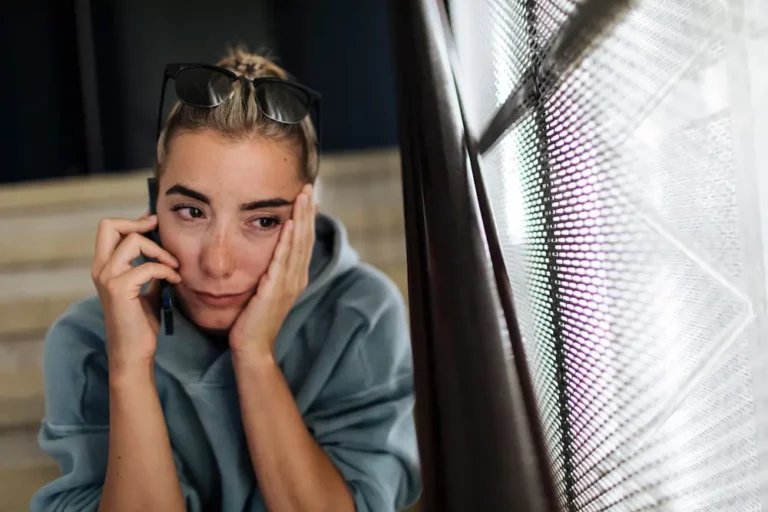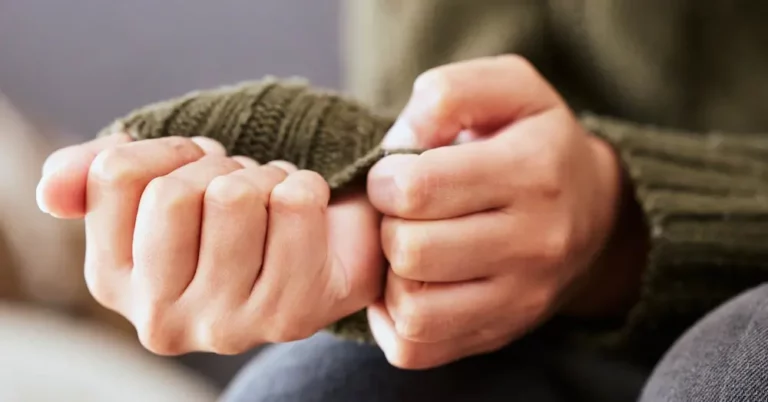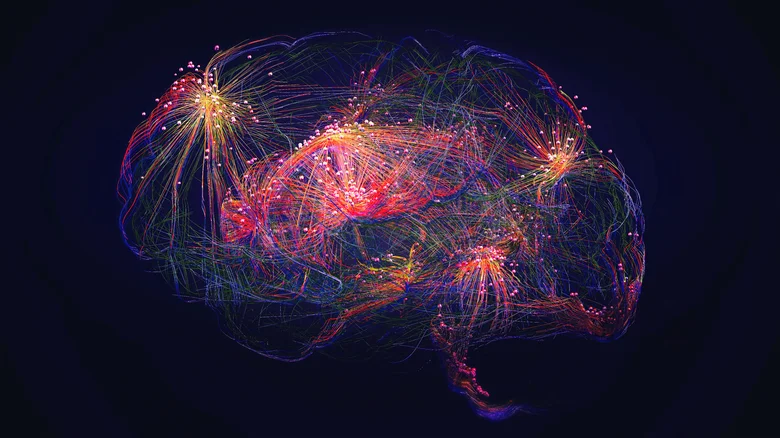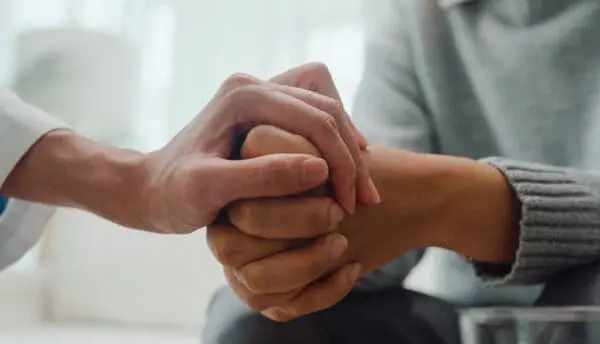Rewiring the Anxious Brain
Anxiety is something many individuals deal with on a daily basis, and it can have a big impact on everyday life for those individuals. Whether it’s worrying about the future, feeling on edge all the time, or having physical symptoms like a racing heart or trouble sleeping, anxiety affects both the mind and body.
Though we don’t know what causes anxiety there is hope. Your brain has the ability to change and heal. With lots of help and focused attention individuals can work to minimize symptoms by “rewiring” their anxious brain.
But how does this work, and what steps can one take to make it happen? Let’s take a look at what science knows about anxiety, how the brain gets stuck in anxious patterns, and, most importantly, how someone can start to rewire their brain for more serenity in their lives.

What Happens to Your Brain When You’re Anxious?
To understand how to rewire the anxious brain, it’s important to first understand what’s going on in the brain during anxiety. Anxiety isn’t just “in your head” — it’s rooted in the brain’s response to stress and perceived danger.
Here are the key areas and concepts:
The amygdala (the fear center)
The amygdala is a small area of the brain that acts as the brain’s alarm system. It detects potential threats and activates the “fight, flight, or freeze” response, which is what happens when you feel anxious or scared. For people with anxiety, the amygdala can become overactive, signaling danger even when there isn’t any real threat.
The prefrontal cortex (the thinking part of the brain)
The prefrontal cortex helps you think rationally, make decisions, and control your emotions. When anxiety takes over, the prefrontal cortex can get overwhelmed, making it harder to think clearly or calm yourself down.
The hippocampus (memory center)
The hippocampus is involved in storing memories, in particular, emotional ones. When you experience something stressful or scary, the hippocampus helps you remember it. Unfortunately, it can also hold onto negative or anxious memories, making it easier for you to feel anxious in similar situations later.
Over time, these brain structures can form habits. For example, if you’re constantly worrying or feeling stressed, the amygdala and hippocampus start to reinforce those anxious patterns, making it harder to break the cycle. But that is where neuroplasticity — the brain’s ability to change — comes into play.
If you are interested in learning more about how particular behaviors are wired into our brains head over to our post How Long to Rewire Brain from Addiction.

What Is Neuroplasticity?
Neuroplasticity is the brain’s ability to reorganize itself by forming new connections between neurons (brain cells). This means that the brain can change its structure and function based on your experiences, thoughts, and behaviors. The more you practice certain ways of thinking or reacting, the stronger those neural pathways become.
This is good news when it comes to mental disorders such as anxiety or depression because it means that you’re not stuck with an anxious brain forever. By consciously practicing new, healthier patterns of thinking and reacting, you can weaken the pathways that fuel anxiety and strengthen the ones that promote calm and balance.

How to Start Rewiring the Anxious Brain
Now that we know it’s possible to rewire the anxious brain, the next question is: how? Rewiring the brain takes time, effort, and consistency, but with the right strategies, it’s entirely possible. Below are some of the most effective techniques for retraining your brain to reduce anxiety.
Mindfulness Meditation
Mindfulness meditation is one of the most powerful tools for rewiring the anxious brain. It involves focusing your attention on the present moment without judgment. When you practice mindfulness regularly, you train your brain to stay calm and present, even in stressful situations.
Research shows that mindfulness can reduce the size of the amygdala, the part of the brain responsible for fear and anxiety. It also strengthens the prefrontal cortex, improving your ability to regulate emotions and think clearly (Saeed et al., 2019 and Hoge et al., 2022).
Here’s how to get started with mindfulness meditation:
- Find a quiet place to sit or lie down.
- Close your eyes and focus on your breath. Notice how the air feels as it enters and leaves your body.
- When your mind starts to wander (which it will!), gently bring your attention back to your breath without judgment.
- Start with just a few minutes a day and gradually increase the time.
Over time, mindfulness will help you become more aware of anxious thoughts and feelings without getting caught up in them. Instead of reacting to anxiety, you’ll learn to observe it and let it pass.
Cognitive Behavioral Therapy (CBT)
Cognitive Behavioral Therapy (CBT) is a type of therapy that’s widely used to treat anxiety. It’s based on the idea that your thoughts, feelings, and behaviors are all connected. By changing the way you think about a situation, you can change the way you feel and act.
CBT helps you rewire your brain by challenging and reframing negative or anxious thoughts. For example, if you often think, “I can’t handle this,” CBT teaches you to replace that thought with something more realistic, like, “This is challenging, but I’ve handled difficult situations before.”
CBT also includes exposure therapy, which helps retrain the brain by gradually exposing yourself to the things that make you anxious in a controlled way. This helps your brain learn that these situations aren’t as dangerous as they seem, which reduces anxiety over time (Borza, 2017 and Scaini et al., 2016).
Here are some CBT techniques you can try on your own:
- Thought records:
Write down your anxious thoughts, then challenge them by asking if they’re based on facts or assumptions. Try to replace them with more balanced thoughts. - Behavioral experiments:
Test out your anxious beliefs by experimenting with new behaviors. For example, if you’re afraid of public speaking, you could practice speaking in front of a small, supportive group to prove to yourself that it’s not as scary as it feels.
By changing the way you think, CBT helps you break free from the anxious thought patterns that keep your brain stuck in fear.
Physical Exercise
Exercise isn’t just good for your body — it’s also great for your brain. Regular physical activity can help reduce anxiety by increasing the production of brain chemicals like serotonin and endorphins, which boost mood and promote relaxation.
Exercise also stimulates the growth of new neurons in the hippocampus, the part of the brain involved in memory and learning. This can help rewire the anxious brain by creating new, positive connections and weakening the ones associated with anxiety (Philippot et al., 2022 and Stubbs et al., 2017).
You don’t have to run marathons to get the benefits of exercise for anxiety. Even moderate activities like walking, swimming, or yoga can help calm the mind and reduce stress. The key is consistency. Aim for at least 30 minutes of physical activity most days of the week.

Breathing Exercises
When you’re anxious, your breathing becomes shallow and rapid, which sends a signal to your brain that something is wrong. This can trigger the fight-or-flight response and make your anxiety worse. But by practicing deep breathing exercises, you can send a message to your brain that it’s safe to relax (Jerath et al., 2015 and Magnon et al., 2021).
Deep breathing exercises help calm the amygdala and reduce the body’s stress response. One simple technique to try is called diaphragmatic breathing:
- Sit or lie down in a comfortable position.
- Place one hand on your chest and the other on your belly.
- Take a slow, deep breath in through your nose, allowing your belly to rise as you fill your lungs with air.
- Slowly exhale through your mouth, letting your belly fall.
- Repeat for several minutes, focusing on the sensation of your breath.
Practicing deep breathing regularly can help train your brain to stay calm in anxious moments.
Healthy Sleep Habits
Sleep is crucial for brain health, and it plays a big role in how you manage anxiety. Lack of sleep can make your brain more reactive to stress, while getting enough rest allows your brain to heal and recover (Scott et al., 2021 and Chellappa and Aeschbach, 2022).
Here are some tips for improving your sleep to help rewire the anxious brain:
- Stick to a consistent sleep schedule by going to bed and waking up at the same time every day.
- Create a relaxing bedtime routine, such as reading, taking a warm bath, or doing some gentle stretches.
- Avoid caffeine, alcohol, and screens (like your phone or TV) before bed, as they can interfere with your sleep.
A well-rested brain is better equipped to handle stress and anxiety, so make sleep a priority.
Positive Social Connections
Humans are social creatures, and positive relationships can have a huge impact on your mental health. Connecting with others helps reduce anxiety by providing emotional support, offering new perspectives, and promoting feelings of safety and belonging.
When you spend time with people who make you feel understood and supported, your brain releases oxytocin, a hormone that reduces stress and promotes relaxation. This can help calm the amygdala and reinforce positive neural pathways.
If you’re struggling with anxiety, reach out to friends, family, or a support group. Sometimes, simply talking about what you’re going through can help reduce feelings of isolation and fear.

The Power of Patience and Practice
Rewiring the anxious brain is a journey, not a quick fix. It takes time, patience, and consistent practice. The more you use techniques like mindfulness, CBT, and breathing exercises, the more your brain will adapt and form new, healthier connections.
It’s important to be gentle with yourself during this process. Some days will be easier than others, and that’s okay. The key is to keep going, even when progress feels slow. Remember, every small step you take toward managing anxiety is a step toward rewiring your brain for calm and peace.
Final Thoughts
Anxiety may feel overwhelming, but it doesn’t have to control your life. By understanding how anxiety affects your brain and using new techniques to build new connections to healthy habits you can find peace within yourself that allows you to live a life of freedom and peace. If you are interested in learning about how psilocybin can be of help on this journey visit some of our other blog posts here.
References
- Borza L. (2017). Cognitive-behavioral therapy for generalized anxiety. Dialogues in clinical neuroscience, 19(2), 203–208.
https://doi.org/10.31887/DCNS.2017.19.2/lborza - Chellappa, S. L., & Aeschbach, D. (2022). Sleep and anxiety: From mechanisms to interventions. Sleep medicine reviews, 61, 101583.
https://doi.org/10.1016/j.smrv.2021.101583 - Hoge, E. A., Bui, E., Mete, M., Dutton, M. A., Baker, A. W., & Simon, N. M. (2023). Mindfulness-Based Stress Reduction vs Escitalopram for the Treatment of Adults With Anxiety Disorders: A Randomized Clinical Trial. JAMA psychiatry, 80(1), 13–21.
https://doi.org/10.1001/jamapsychiatry.2022.3679. - Jerath, R., Crawford, M. W., Barnes, V. A., & Harden, K. (2015). Self-regulation of breathing as a primary treatment for anxiety. Applied psychophysiology and biofeedback, 40(2), 107–115. https://doi.org/10.1007/s10484-015-9279-8
- Magnon, V., Dutheil, F., & Vallet, G. T. (2021). Benefits from one session of deep and slow breathing on vagal tone and anxiety in young and older adults. Scientific reports, 11(1), 19267.
https://doi.org/10.1038/s41598-021-98736-9 - Philippot, A., Dubois, V., Lambrechts, K., Grogna, D., Robert, A., Jonckheer, U., Chakib, W., Beine, A., Bleyenheuft, Y., & De Volder, A. G. (2022). Impact of physical exercise on depression and anxiety in adolescent inpatients: A randomized controlled trial. Journal of affective disorders, 301, 145–153.
https://doi.org/10.1016/j.jad.2022.01.011 - Saeed, S. A., Cunningham, K., & Bloch, R. M. (2019). Depression and Anxiety Disorders: Benefits of Exercise, Yoga, and Meditation. American family physician, 99(10), 620–627
- Scaini, S., Belotti, R., Ogliari, A., & Battaglia, M. (2016). A comprehensive meta-analysis of cognitive-behavioral interventions for social anxiety disorder in children and adolescents. Journal of anxiety disorders, 42, 105–112.
https://doi.org/10.1016/j.janxdis.2016.05.008 - Scott, A. J., Webb, T. L., Martyn-St James, M., Rowse, G., & Weich, S. (2021). Improving sleep quality leads to better mental health: A meta-analysis of randomised controlled trials. Sleep medicine reviews, 60, 101556.
https://doi.org/10.1016/j.smrv.2021.101556 - Stubbs, B., Vancampfort, D., Rosenbaum, S., Firth, J., Cosco, T., Veronese, N., Salum, G. A., & Schuch, F. B. (2017). An examination of the anxiolytic effects of exercise for people with anxiety and stress-related disorders: A meta-analysis. Psychiatry research, 249, 102–108.
https://doi.org/10.1016/j.psychres.2016.12.020







